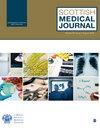Machine learning, artificial intelligence, and digitalisation of healthcare: Convergence of science and technology.
IF 1.4
4区 医学
Q2 MEDICINE, GENERAL & INTERNAL
引用次数: 0
Abstract
In this May, 2023 issue of Scottish Medical Journaloldest medical journal in the British medical journalism, you will come across a number of exciting papers looking at education of trainees, improving training opportunities through creating a culture of training and burnout in medical profession. But an article which has been invited as editorial from India, summarises opportunities and challenges of digitalisation of healthcare in India. Dr Javed provides us a glimpse of issues related to making healthcare universal in India and the way country is grappling with modernising data collection through the use of power of digital technology. Digital technology could push boundaries of learning and education through sharing and co-creation of innovations. Machine learning and artificial intelligence could be built around data mining to transform healthcare universally. Digital technology could unleash its power in decision-making particularly in the allocation of resources where these are required most. Digital inclusion through improvement of literacy should address long-standing issues of healthcare in marginalised groups such as ethnic minority population. One of the major areas of digitalisation of data is imaging. Images of any part of body carry a wealth of information and tell us more than what can be seen by unaided eyes. Digitalisation improves knowledge exchange and innovations. When encountered with a rare case or a rare image (Figure 1), one can immediately connect with colleagues across the globe and learn from experience of others. Accumulation of data can then be used for machine learning through various algorithms and technologies to create new therapeutic models (Figure 2). The delivery and follow-up can be delivered close to patient chosen place without any issues. Similarly, feedback and suggestions following delivery of services can be gathered through use of smart phones and other devices. The convergence of science and technology is taking place around us. This has potential to improve our precision in managing our patients through easy and better characterisation of disease and health. Neural networks (Figure 2) remain key to machine learning in imaging and are certainly a step towards recreating higher functions of brain through use of advanced computers. Just like human brain, neural networks contain multiple layers with input layer receiving data and hidden layers extract imaging features relevant to answer a particular diagnostic/research question. These layers assign a particular classification to the extracted features and provide relevant information to the operators. Training these networks with superior quality data is key to the entire process. Larger the data, better the prediction models. Later cannot be possible without large international collaborations in particularly for rare disease manifestation such as perirenal lymphoma.机器学习、人工智能和医疗数字化:科技融合。
本文章由计算机程序翻译,如有差异,请以英文原文为准。
求助全文
约1分钟内获得全文
求助全文
来源期刊

Scottish Medical Journal
医学-医学:内科
CiteScore
4.80
自引率
3.70%
发文量
42
审稿时长
>12 weeks
期刊介绍:
A unique international information source for the latest news and issues concerning the Scottish medical community. Contributions are drawn from Scotland and its medical institutions, through an array of international authors. In addition to original papers, Scottish Medical Journal publishes commissioned educational review articles, case reports, historical articles, and sponsoring society abstracts.This journal is a member of the Committee on Publications Ethics (COPE).
 求助内容:
求助内容: 应助结果提醒方式:
应助结果提醒方式:


